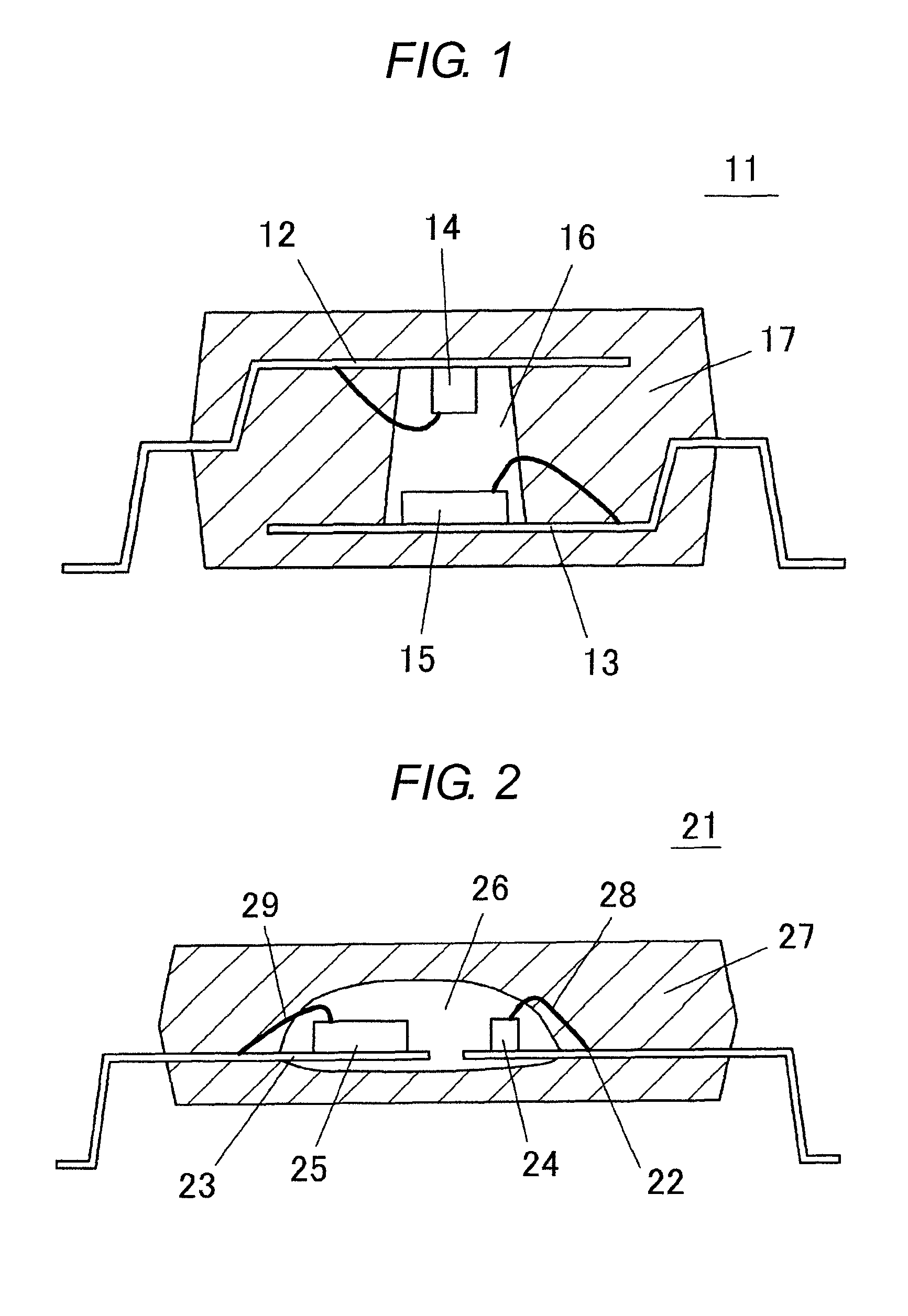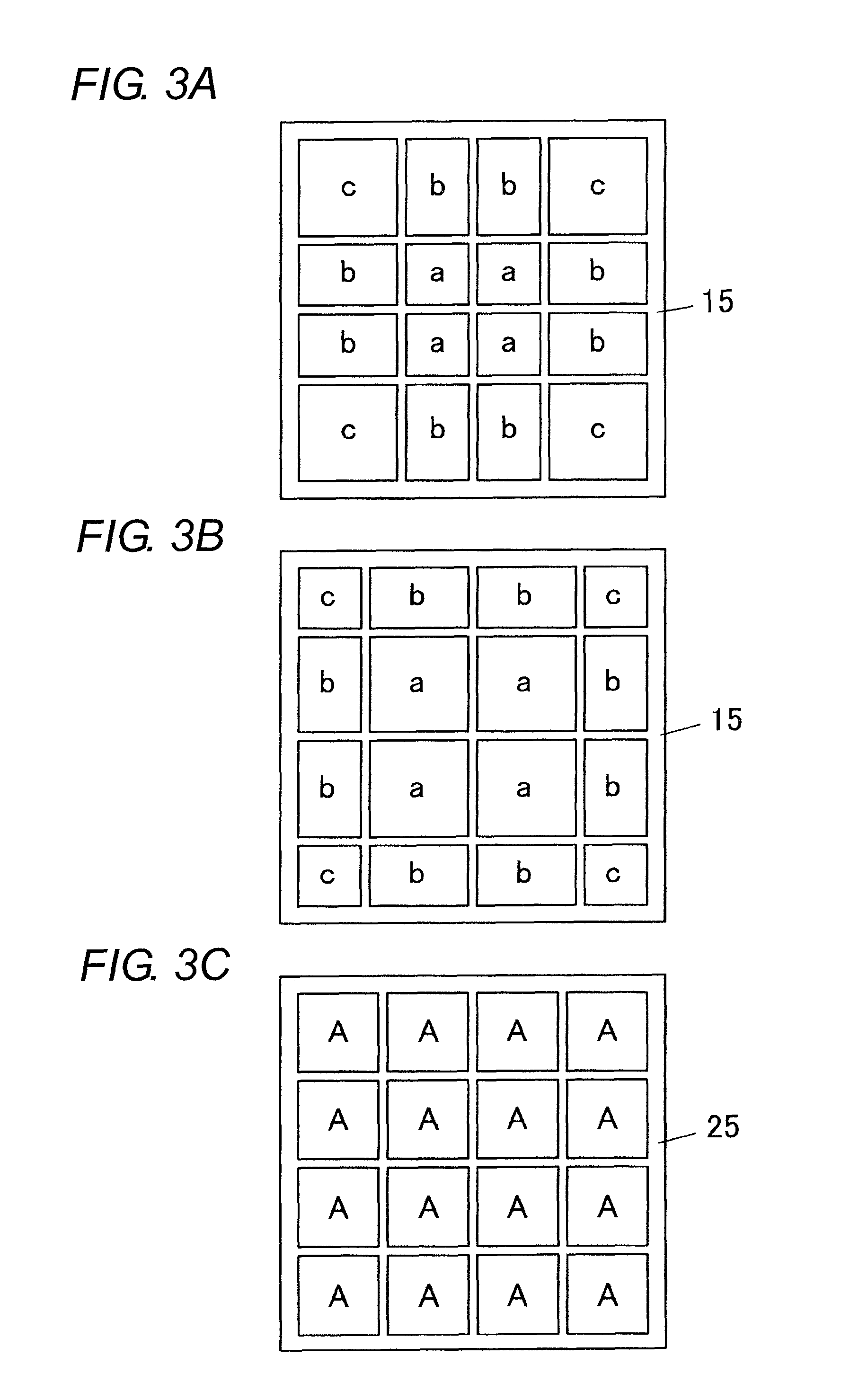Optical coupler having first and second terminal boards and first and second conversion elements
a technology of optical couplers and terminal boards, applied in the field of optical couplers, can solve the problems of preventing the merit of juxtaposed type optical couplers from being used to good effect, high manufacturing cost of optical couplers, etc., and achieve the effect of reducing the size of the semiconductor relay
- Summary
- Abstract
- Description
- Claims
- Application Information
AI Technical Summary
Benefits of technology
Problems solved by technology
Method used
Image
Examples
first embodiment
[0047](First Embodiment)
[0048]First, a structure of an optical coupler 31 of a first embodiment of the present invention will be described. FIG. 4 is a sectional view showing a structure of the optical coupler 31 in accordance with the first embodiment. FIG. 5 is a plan view showing a light emitting element 34 (first conversion element) and a light receiving element 35 (second conversion element) which are mounted on element mounting sections 32a, 33a of lead frames 32, 33 inside the optical coupler 31.
[0049]As shown in FIG. 5, the optical coupler 31 includes: the lead frame 32 (terminal board) for die-bonding of the light emitting element 34 to the element mounting section 32a; the lead frame 33 (terminal board) for die-bonding of the light receiving element 35; a lead frame 40 for wire-bonding between a wiring section 40a and the light emitting element 34; and lead frames 41, 42 for wire-bonding between wiring sections 41a, 42a and the light receiving element 35. Any of the respec...
second embodiment
[0088](Second Embodiment)
[0089]FIG. 14 is a plan view showing a structure of a principal part of an optical coupler 51 in accordance with a second embodiment of the present invention. Each of the light receiving cells 46 arrayed in parallel has an equivalent width in the optical coupler 31 of the first embodiment, whereas in the optical coupler 51, the width of the light receiving cell 46 at the midsection is narrowed and the width of the light receiving cell 46 at the end is widened. Other configurations are similar to those of the first embodiment, and descriptions thereof are thus omitted.
[0090]In the case of the light emitting element 34 being located almost on the central line of the light receiving area (whole of light receiving cells), an optical signal incident on the light receiving cell 46 at the center has larger light intensity than that of an optical signal incident on the light receiving cell 46 at each end. Therefore, in such a case, the width of the light receiving c...
third embodiment
[0092](Third Embodiment)
[0093]FIG. 15 is a sectional view showing an optical couple 52 in accordance with a third embodiment of the present invention. Also this optical coupler 52 is a juxtaposed type optical coupler since the light emitting element 34 and the light receiving element 35 are mounted on the surfaces of the same orientation in the element mounting sections 32a, 34a. Further, in this optical coupler 52, the element mounting section 32a mounted with the light emitting element 34 is higher than the element mounting section 33a mounted with the light receiving element 35.
[0094]As this optical coupler 52, when the position of the light emitting element 34 is higher than the position of the light receiving element 35, as indicated with an arrow line in FIG. 16, not only that light launched from the light emitting element 34 is reflected on the light reflective resin layer 48 and incident on the light receiving element 35, but also that part of the light launched from the lig...
PUM
| Property | Measurement | Unit |
|---|---|---|
| electromotive force | aaaaa | aaaaa |
| temperature | aaaaa | aaaaa |
| temperature | aaaaa | aaaaa |
Abstract
Description
Claims
Application Information
 Login to View More
Login to View More - R&D
- Intellectual Property
- Life Sciences
- Materials
- Tech Scout
- Unparalleled Data Quality
- Higher Quality Content
- 60% Fewer Hallucinations
Browse by: Latest US Patents, China's latest patents, Technical Efficacy Thesaurus, Application Domain, Technology Topic, Popular Technical Reports.
© 2025 PatSnap. All rights reserved.Legal|Privacy policy|Modern Slavery Act Transparency Statement|Sitemap|About US| Contact US: help@patsnap.com



